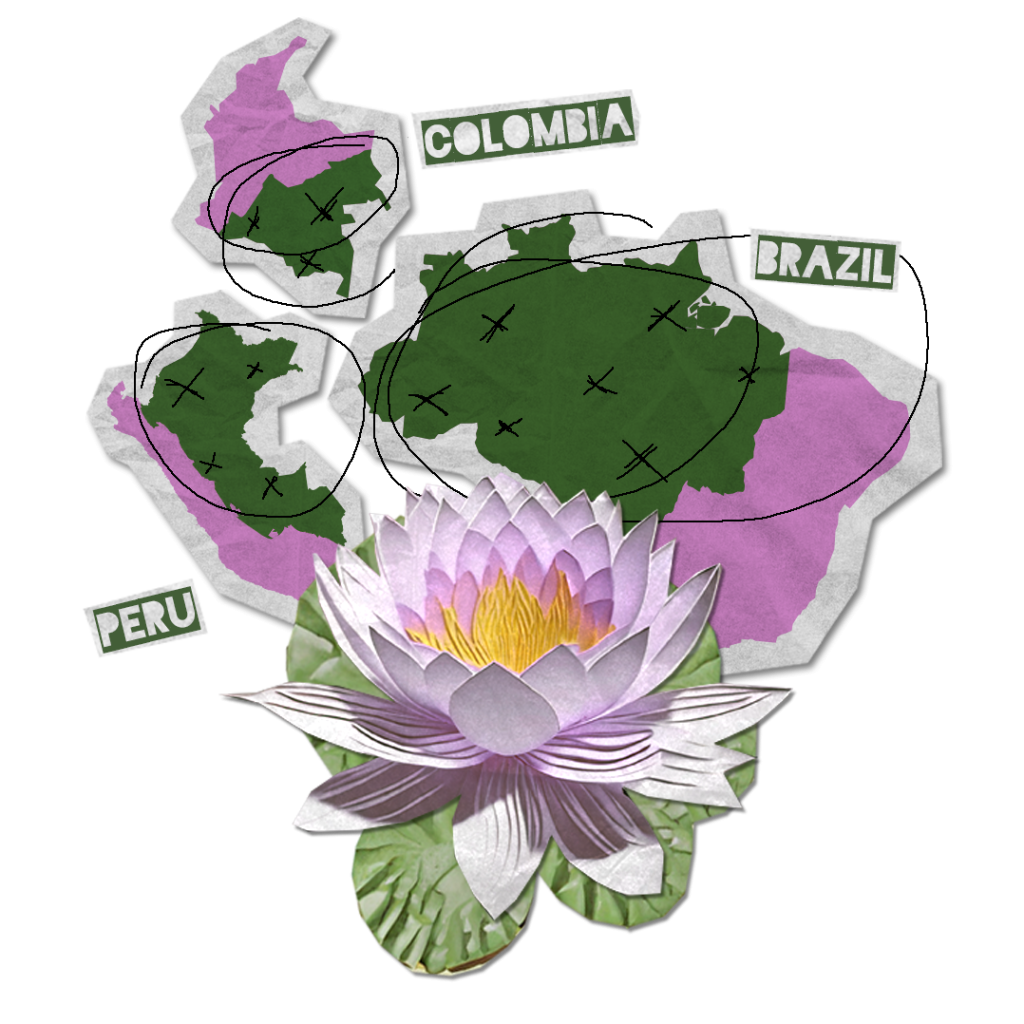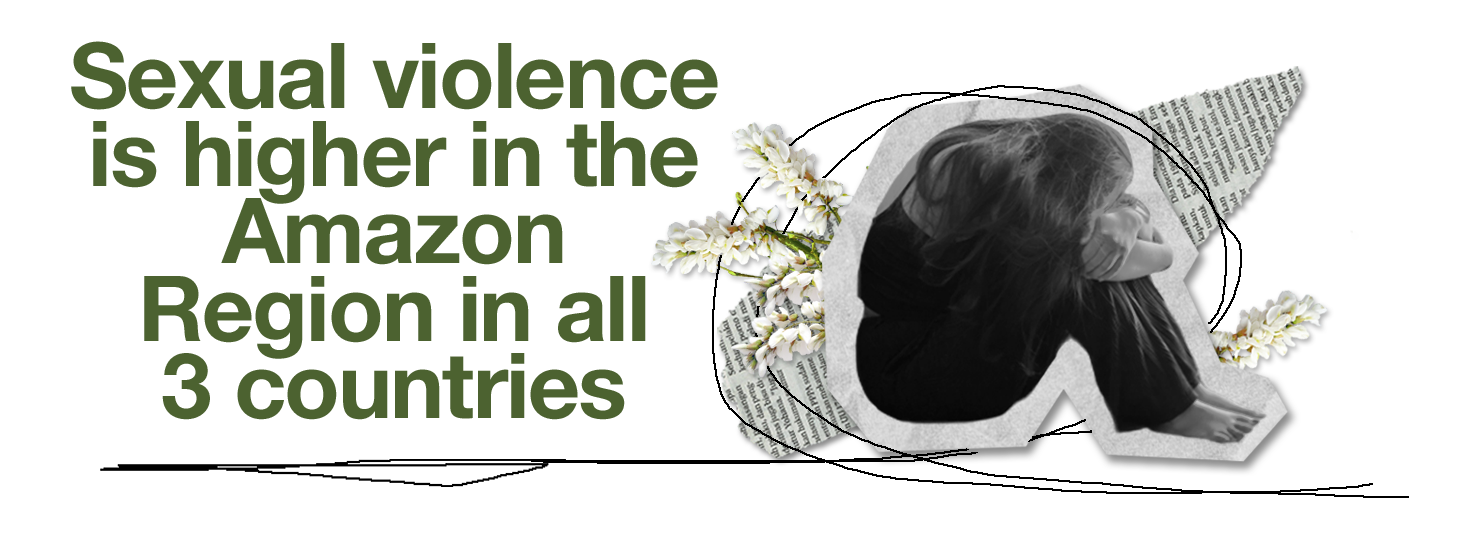
The Igarapé Institute uses cookies and other similar technologies to improve your experience, in accordance with our Privacy Policy and our Terms of Use, and by continuing to browse, you agree to these conditions.

In this context, women have suffered much more violence in areas marked by land disputes and the use of land and water than in other regions of the country. They are disproportionately affected and face threats and reprisals both for their activism in defense of the biome and due to the environment of normalized violence and gender inequality.
Since 2021, the Igarapé Institute has been mapping the impacts of this scenario on women’s lives, including physical and psychological aspects. The data on Brazil, Colombia, and Peru reveal that violence against women in the Amazon Basin is almost double that recorded in the rest of each of the three countries.



Os conflitos na região amazônica têm diversos atores – os fazendeiros são os principais responsáveis, seguidos pelo governo federal
e grileiros.
Atualmente, existem 25 conflitos socioambientais ativos, envolvendo atividades econômicas como mineração, agropecuária e exploração de resíduos florestais.
Em 2022, o estado de Meta enfrentou a maior incidência de conflitos socioambientais, totalizando 7 casos ativos, seguido por Caquetá, Guaviare e Putumayo, cada um com 5 ocorrências registradas. Uma análise mais aprofundada revela que os municípios mais afetados são San Jose del Guaviare (Guaviare) e La Macarena (Meta). Nessas regiões, estão em curso processos de apropriação e utilização de terras em áreas protegidas, incluindo o Parque Nacional Chiribiquete e o Parque Nacional Natural Tinigua.

Em 2022, a Amazônia peruana registrou 44 conflitos socioambientais ativos. Cerca de 85% estão relacionados à exploração de petróleo e à mineração, abrangendo tanto atividades legais quanto ilegais.
Fonte: Defensoría del Pueblo de Perú (2022). Relatório de conflitos sociais 2022-2004. Dados fornecidos mediante solicitação do Instituto Igarapé.
21 desses conflitos ocorrem no estado de Loreto, seguido por Pasco com 5, Amazonas e Junín com 4 cada um, e Madre de Dios com 2. Em Loreto, destacam-se os casos de derramamentos de petróleo, além de contaminação da água, que também afetam a província de Datem del Marañon. Tanto Pasco quanto Madre de Dios são cenários de conflitos envolvendo empresas mineradoras, enquanto Madre de Dios ainda enfrenta atividades de mineração ilegal na Reserva Nacional de Tambopata e na zona de La Pampa.

Source: Homicide Deaths. Mortality Information System – SIM. Ministry of Health.

Source: Homicides – Vital Statistics of Colombia. Administrative Department of Statistics – DANE.

Source: Ministry of Health of Peru (2023). SINADEF: Death Certificates. National Open Data Platform.
Specifically for sexual violence, the Brazilian Amazon shows a rate 30% higher than in the rest of the country


Source: General Coordination of Surveillance of Non-Communicable Diseases and Health Promotion, Department of Surveillance of Non-Communicable Diseases and Health Promotion. DATASUS Platform – File Transfer.

Source: SIVIGILA Cases of gender-based violence attended by the health system reported to the Public Health Surveillance System SIVIGILA – National Institute of Health, provided upon request.

Source: Cases attended at the Women’s Emergency Centers – CEM. National Program for the Prevention and Eradication of Violence against Women and Family Group Members – AURORA. Statistical Portal.
Support





The Igarapé Institute uses cookies and other similar technologies to improve your experience, in accordance with our Privacy Policy and our Terms of Use, and by continuing to browse, you agree to these conditions.

